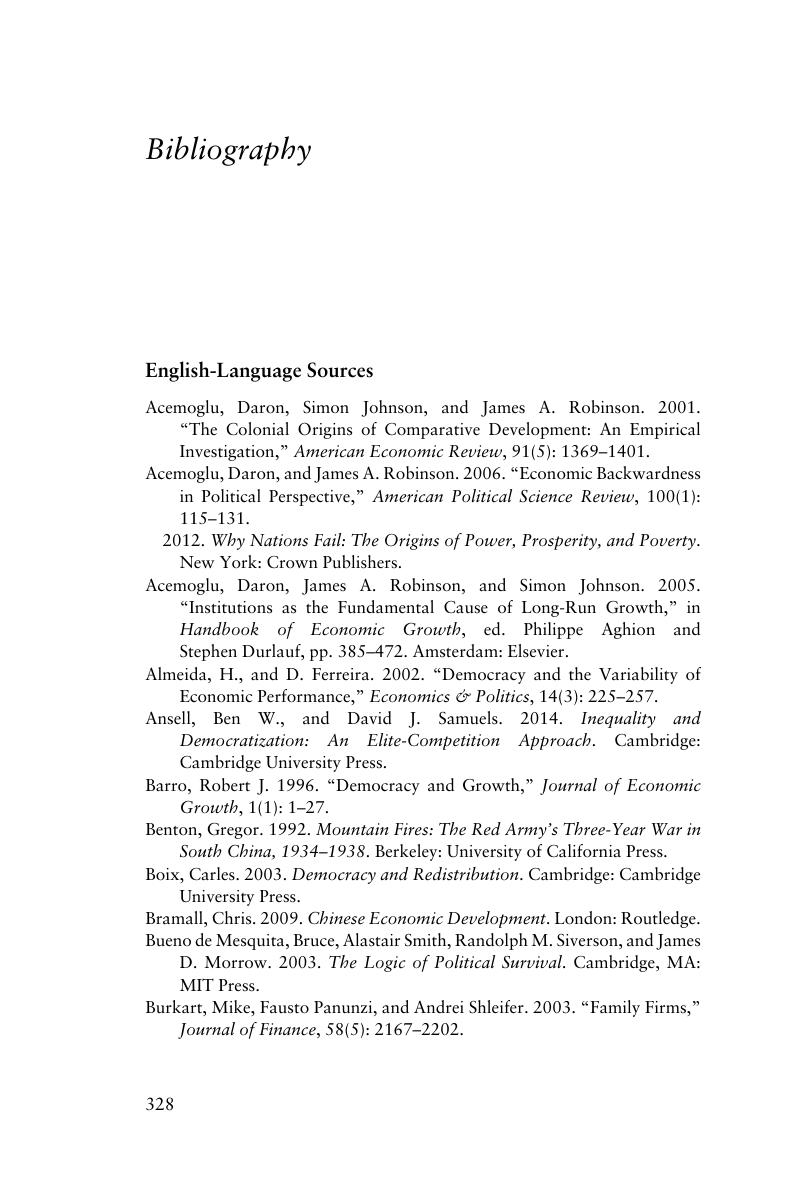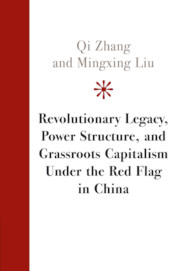Book contents
- Revolutionary Legacy, Power Structure, and Grassroots Capitalism Under the Red Flag in China
- Revolutionary Legacy, Power Structure, and Grassroots Capitalism Under the Red Flag in China
- Copyright page
- Dedication
- Contents
- Figures
- Tables
- Acknowledgments
- Abbreviations
- 1 Introduction
- 2 Revolutionary History in Zhejiang Province and Its Political Consequences
- 3 The Dog That Did Not Bark
- 4 United in the Cultural Revolution
- 5 Capitalism with Zhejiang Characteristics
- 6 Beyond Zhejiang
- 7 Discussion and Conclusions
- Appendices
- Bibliography
- Index
- References
Bibliography
Published online by Cambridge University Press: 04 March 2019
- Revolutionary Legacy, Power Structure, and Grassroots Capitalism Under the Red Flag in China
- Revolutionary Legacy, Power Structure, and Grassroots Capitalism Under the Red Flag in China
- Copyright page
- Dedication
- Contents
- Figures
- Tables
- Acknowledgments
- Abbreviations
- 1 Introduction
- 2 Revolutionary History in Zhejiang Province and Its Political Consequences
- 3 The Dog That Did Not Bark
- 4 United in the Cultural Revolution
- 5 Capitalism with Zhejiang Characteristics
- 6 Beyond Zhejiang
- 7 Discussion and Conclusions
- Appendices
- Bibliography
- Index
- References
Summary

- Type
- Chapter
- Information
- Revolutionary Legacy, Power Structure, and Grassroots Capitalism under the Red Flag in China , pp. 328 - 344Publisher: Cambridge University PressPrint publication year: 2019



